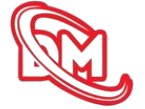How to Source Garments from Bangladesh efficiently with Dress Merchant, your trusted apparel buying agent. We specialize in connecting global brands with top-rated garment manufacturers and exporters across Bangladesh. From product development to quality assurance and logistics, we ensure smooth, transparent, and cost-effective sourcing solutions. Partner with us for reliability, excellence, and competitive pricing in every apparel order.
Thank you for reading this post, don't forget to subscribe!1. Why Bangladesh Is the Global Hub for Garment Sourcing
Bangladesh has earned its reputation as one of the world’s leading destinations for garment sourcing, attracting international fashion brands and retailers from every corner of the globe. The country’s competitive edge lies in its low production costs, skilled workforce, and commitment to sustainable apparel manufacturing. With over 4,500 factories producing high-quality knitwear, woven garments, and denim products, Bangladesh ranks among the top exporters to major markets such as the USA, UK, Germany, and Canada.
Moreover, government incentives, tax benefits, and a stable export policy have strengthened the Bangladesh garment industry over the years. The industry is constantly improving infrastructure and compliance standards, ensuring factories follow international codes of conduct, such as safety audits and ethical labor practices. This dedication to compliance has made Bangladesh synonymous with reliability and transparency in apparel manufacturing.
Whether you are a start-up clothing brand or a global retailer, sourcing garments from Bangladesh provides unmatched value, flexibility, and production efficiency. Its proven expertise in mass production, coupled with eco-friendly initiatives like green factories, makes it a preferred choice for responsible buyers worldwide.
2. Understanding the Garment Manufacturing Industry in Bangladesh
The garment manufacturing industry in Bangladesh forms the backbone of the country’s economy, contributing nearly 84% of total export earnings. Known for its efficiency, quality craftsmanship, and adaptability, this sector caters to a wide range of apparel categories — from casual wear and sportswear to formal attire and workwear.
Manufacturers in Bangladesh utilize advanced machinery, modern cutting and sewing technology, and a well-trained workforce to ensure consistency and precision in every order. The country’s factories are also certified by leading international bodies, guaranteeing adherence to ethical sourcing and sustainable production practices.
One of the unique aspects of the Bangladesh apparel industry is its specialization in volume-based production. Brands can rely on short lead times and competitive pricing without compromising quality. The industry’s ecosystem includes textile mills, dyeing facilities, and accessories suppliers — all operating within close proximity, which reduces turnaround time significantly.
For buyers, understanding this ecosystem is crucial. It helps identify whether a factory is fully vertical (handling spinning to packaging) or partially integrated. This knowledge allows you to choose the right partner depending on your specific apparel requirements.
3. Step-by-Step Guide: How to Source Garments from Bangladesh
Sourcing garments from Bangladesh may seem complex, but a structured approach ensures success. The process begins by conducting market research to identify your desired apparel category and sourcing needs. Once defined, the next step is to shortlist reliable garment manufacturers or buying houses that specialize in your product type.
After identifying potential partners, request samples to assess product quality and craftsmanship. Evaluate their compliance certifications (such as BSCI, WRAP, or OEKO-TEX) to ensure ethical and sustainable operations. Once satisfied, negotiate pricing, production capacity, and lead times. Clear communication is essential — ensure your tech packs, quantity, and quality standards are well documented.
Before finalizing, it’s advisable to conduct a factory visit or hire a third-party inspection agency. This helps verify production capabilities and minimize risks. After placing the order, monitor progress regularly and arrange pre-shipment inspections. Finally, handle logistics, customs, and export documentation with your freight forwarder for smooth delivery.
By following these steps diligently, sourcing apparel from Bangladesh becomes a streamlined and rewarding experience, ensuring both quality and reliability at competitive prices.
4. Finding the Right Garment Manufacturer or Supplier
Selecting the right garment manufacturer in Bangladesh is one of the most critical steps in successful apparel sourcing. Start by evaluating manufacturers based on their production capacity, export experience, and certifications. Look for suppliers who specialize in your desired product category — whether it’s knitwear, woven garments, or denim apparel.
Authenticity and transparency are key. Always verify a factory’s export history, client portfolio, and compliance records. You can find reliable suppliers through online directories, trade fairs, or reputable garment sourcing agents who work directly with vetted manufacturers. Requesting physical samples is also a vital step to assess stitching, finishing, and fabric quality before bulk production.
Additionally, ensure that your chosen manufacturer follows international labor and safety standards. A dependable partner should be willing to share production details, provide clear quotations, and maintain open communication throughout the process.
When you collaborate with the right supplier, you not only ensure consistent product quality but also establish a foundation for long-term growth and brand credibility in the global apparel market.
5. Evaluating Supplier Capabilities and Compliance Standards
Before entering into a production contract, it’s essential to evaluate a supplier’s manufacturing capabilities and compliance standards. Reputable garment factories in Bangladesh hold certifications such as WRAP, SEDEX, BSCI, and ISO — ensuring that they adhere to international labor laws, workplace safety, and environmental protection norms.
Assess whether the supplier can meet your order volume, deliver within deadlines, and maintain consistent quality. Request details about their machinery, production lines, and internal quality control procedures. Understanding their infrastructure helps determine whether the factory is suitable for mass or specialized production.
Ethical compliance is equally vital. Many global brands today prefer working with factories that implement sustainable garment manufacturing practices — such as waste reduction, renewable energy use, and eco-friendly dyes. Visiting factories or using third-party auditors ensures transparency and accountability.
A thorough supplier evaluation not only minimizes risks but also helps build a trustworthy supply chain that aligns with your brand’s values and quality expectations.
6. Negotiating Prices and Production Terms Effectively
Effective negotiation is the cornerstone of successful garment sourcing in Bangladesh. Start by researching average market prices for your apparel type. Understanding cost breakdowns — including fabric, labor, printing, packaging, and shipping — will help you negotiate transparently.
When discussing prices, focus not only on cost but also on value-added services such as sampling support, quality inspection, and flexible payment terms. It’s important to build a win-win relationship with your supplier rather than pushing for unrealistically low prices that might affect quality.
Establish clear terms for delivery schedules, order quantity, and after-sales support. Document every agreement in a purchase order (PO) to avoid misunderstandings. If possible, visit the supplier’s factory to assess production readiness and communicate your quality expectations directly.
Building trust through fair negotiation ensures you receive the best deal while maintaining superior product quality and long-term reliability — key elements in maintaining a sustainable sourcing partnership.
7. The Role of Garment Buying Houses and Sourcing Agents
Garment buying houses in Bangladesh play a pivotal role in connecting international buyers with local manufacturers. These professional intermediaries act as sourcing partners, ensuring smooth coordination between the buyer and supplier. They handle everything from supplier identification, price negotiation, and production follow-up to quality inspection and logistics management.
For new or small-scale apparel brands, hiring a sourcing agent in Bangladesh offers peace of mind, especially when dealing with language barriers, time zone differences, or cultural challenges. These agents have strong local networks and experience in vetting reliable factories.
Additionally, buying houses ensure compliance with global quality and ethical standards by performing factory audits and inspections. They also assist in sample development, ensuring that the buyer’s product specifications are met precisely.
In short, working with a professional buying house reduces sourcing risks, saves time, and enhances communication — making the entire process seamless and efficient for global apparel buyers.
8. Quality Control and Inspection in Garment Sourcing
Maintaining product consistency is a key challenge in global apparel sourcing. Implementing quality control in garment production ensures that every piece meets your desired standards. In Bangladesh, many factories follow multi-stage inspection systems — including inline, midline, and final inspections — to detect and correct errors promptly.
Brands should consider partnering with third-party inspection agencies that specialize in apparel testing and certification. These agencies verify fabric quality, colorfastness, stitching accuracy, and measurement consistency before shipment.
Establishing a detailed quality assurance checklist also helps communicate expectations clearly to the manufacturer. Transparency during production ensures that the factory understands your quality requirements and adheres to them strictly.
By maintaining strong quality control measures, buyers can avoid costly rejections, returns, or brand damage — ensuring the garments sourced from Bangladesh meet global standards of excellence.
9. Logistics, Shipping, and Export Documentation
Efficient logistics management is essential to ensure on-time delivery of your apparel orders. Bangladesh has modernized its export infrastructure with well-connected seaports like Chittagong and Mongla, facilitating smooth shipment of garments worldwide.
Buyers must choose between air freight and sea freight based on urgency and budget. Sea freight is ideal for bulk orders, while air shipment suits smaller or urgent consignments. Partnering with an experienced freight forwarder in Bangladesh can simplify customs clearance, insurance, and export documentation processes.
Key export documents include the commercial invoice, packing list, bill of lading, certificate of origin, and inspection report. Ensuring accuracy in these documents prevents delays at customs and ensures hassle-free international delivery.
Strong logistics planning not only minimizes costs but also enhances reliability, ensuring your garments reach the destination safely and on schedule.
10. Tips for Building Long-Term Partnerships with Bangladeshi Suppliers
Sustainable business relationships are built on trust, transparency, and mutual respect. To develop long-term partnerships with Bangladeshi garment suppliers, focus on consistent communication, timely payments, and fair negotiation practices.
Regularly visiting suppliers, engaging in product development discussions, and maintaining quality feedback loops help strengthen collaboration. Appreciate your supplier’s efforts and recognize their commitment to meeting your expectations.
Moreover, consider working with suppliers who emphasize ethical manufacturing and sustainable sourcing. Supporting socially responsible factories ensures that your brand contributes to environmental and social welfare.
By nurturing strong supplier relationships, you not only gain reliability and quality assurance but also become a valued partner in Bangladesh’s thriving apparel ecosystem — a win-win strategy for both buyer and manufacturer.
Conclusion: How to Source Garments from Bangladesh
In conclusion, understanding how to source garments from Bangladesh effectively is key to building a successful and sustainable apparel business in today’s competitive global market. With its robust textile infrastructure, skilled workforce, and cost-efficient production capabilities, Bangladesh stands as one of the world’s most trusted destinations for apparel sourcing. However, navigating this vast industry requires the right expertise, connections, and quality assurance systems.
That’s where Dress Merchant comes in — as your reliable apparel buying agent in Bangladesh, we bridge the gap between international buyers and top-tier garment manufacturers. From factory selection, product development, and quality control to shipment coordination, our team ensures a seamless sourcing experience tailored to your specific needs.
Partnering with Dress Merchant means gaining access to a professional network of compliant factories, transparent sourcing processes, and timely deliveries — all backed by a commitment to excellence, sustainability, and long-term partnership. Whether you’re a fashion brand, retailer, or startup, we make sourcing garments from Bangladesh easier, smarter, and more profitable.
Choose Dress Merchant — your trusted global sourcing partner — and experience the difference that expertise, integrity, and innovation bring to every order.













